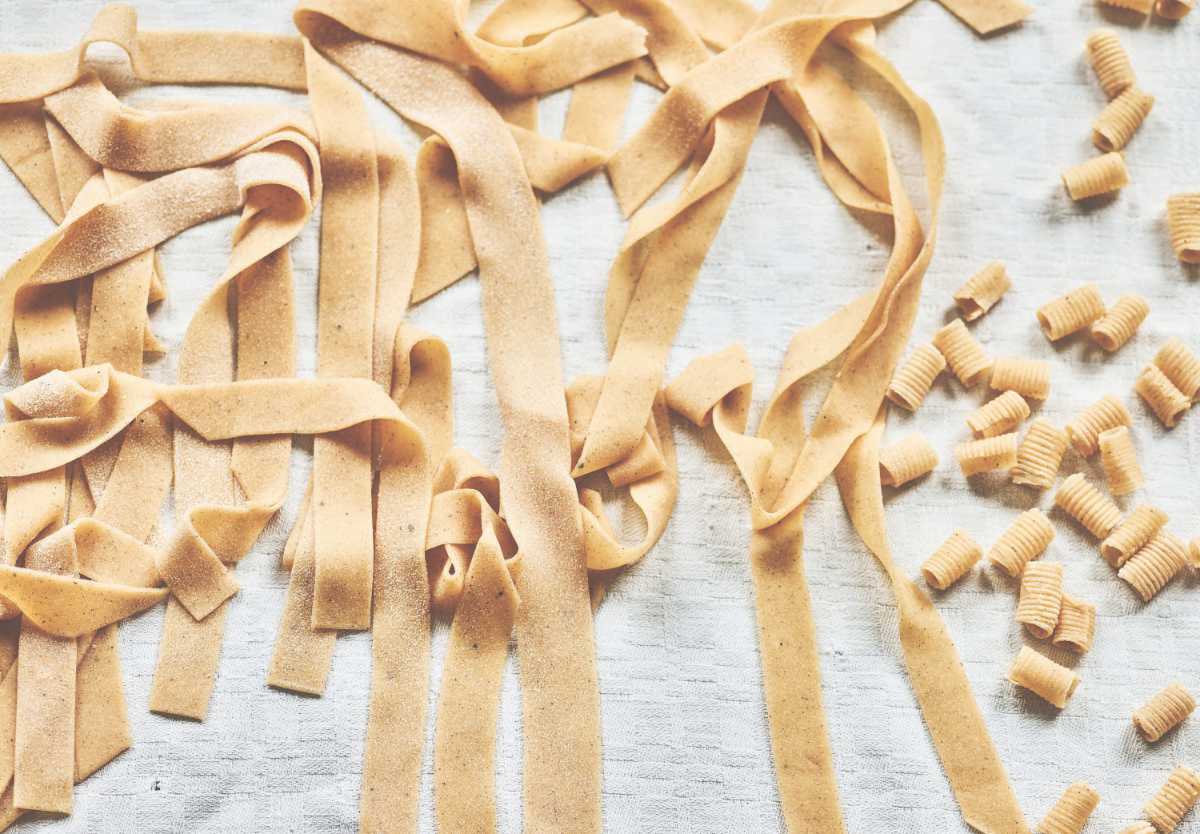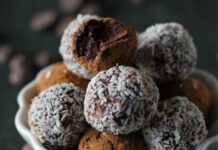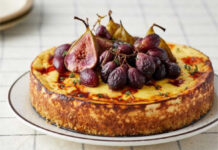Lasagne and fusilli seem to have become the pariahs of the pasta aisle – they’re pretty much all that’s left.
So, if you still have a ready supply of flour, it might be time to start making your own pasta – in the shapes you’re missing and craving – from scratch.
Here’s how…
If you have eggs… how to make egg pasta dough
“The nonna way is to decide on how many eggs you are going to use, and use one handful of flour for every egg. This handful equates to 100 g (31/2 oz) of flour per egg,” says Vicky Bennison, author of Pasta Grannies: The Secrets of Italy’s Best Home Cooks.
Step 1: Weigh out your ingredients
Allow 100g 00 flour (or plain flour) per person for a main course-sized portion. You need 55g of egg without its shell for every 100g flour. For example, if you are making pasta for four people, you will need 400g flour and 220g egg, which most of the time will mean four hen eggs. If your eggs are on the small side, add a bit of water or another egg yolk to bring the quantity up to the right weight. If your weight is slightly over, use the eggshell to scoop out excess egg white.
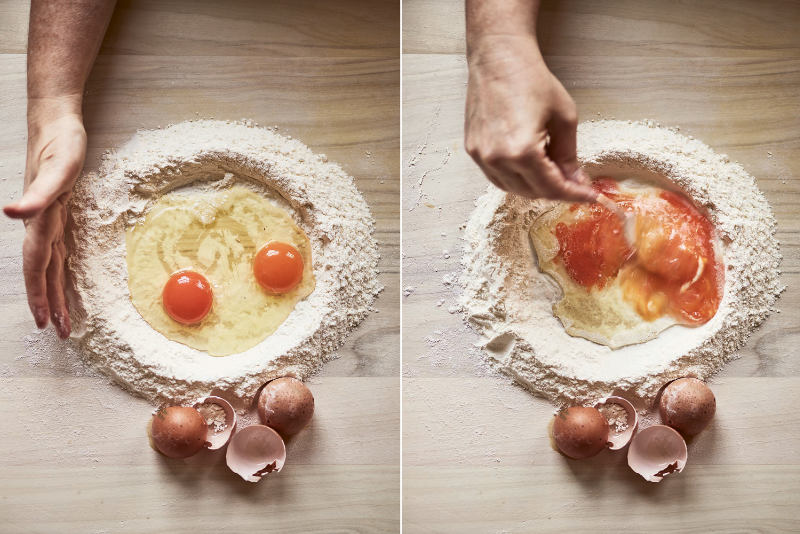
Step 2: Mix them together
Tip the flour onto your board in a heap. Use your fingers to make a well in the centre, making sure it’s not too wide or the rim too low, otherwise your egg mix will overflow. Pour the eggs into the well. Take a fork (or use your fingers) and scramble the eggs together. They are mixed sufficiently when you lift the fork and you have a homogeneous, non-clumpy looking liquid that falls smoothly from your fork.
Draw your fork around the inside of the flour wall, so a small quantity of flour falls into the egg mixture. Whisk it in, smooshing any lumps, so you gradually create a batter. Repeat until you have a mixture that won’t run all over the board. At this point, you can cave in the flour walls and mix in the rest of the flour with a bench scraper by scraping the flour inwards and over the batter. Of course, you can beat the egg and flour together in a bowl, even with a food mixer, but it’s not as fun.
Mop up any flour with your dough and give it a quick knead. If it is sticky, add a tablespoon of flour and knead it in. It is better to adjust your dough now than later.
If it is not sticky and you have some flour on the board, scrape off the excess, so you have a nice clean board to knead your dough. The dough should feel soft and pillowy, but not too sticky.
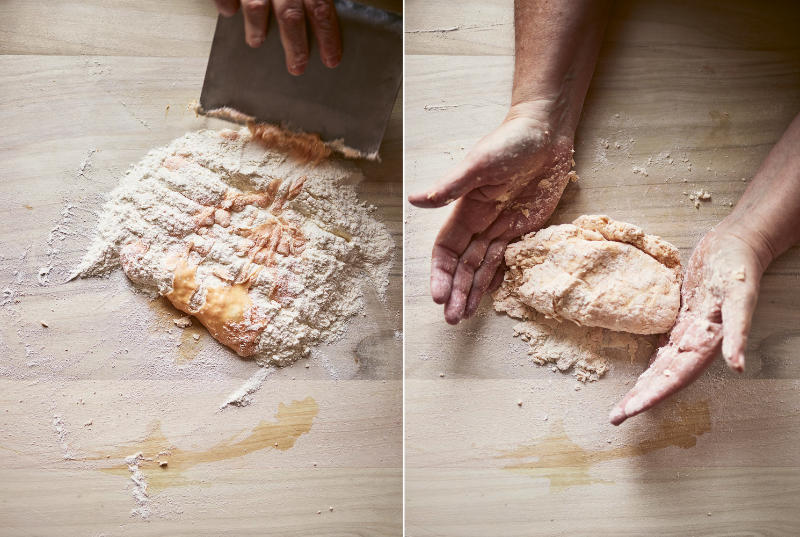
Step 3: Knead the dough
Knead the dough for 10 minutes minimum. Think of your hands as waves: the heels of your hands push the dough away from you, while your fingers pull it back. Once your dough has become a log, turn it 90-degrees and fold it in half and continue kneading. You want to work at a brisk pace, as air is the enemy of decent pasta – it will dry it out, so don’t dawdle. If the pasta feels too dry, damp your hands with water to put moisture back into the dough.
Kneading develops the gluten and elasticity of the dough. Your dough should feel silky and smooth. When you press your thumb into the dough, it should bounce back. Some nonne judge their dough to be done when they can see small holes in the dough if sliced through the middle. To knead, you can also use a dough hook on your food mixer.
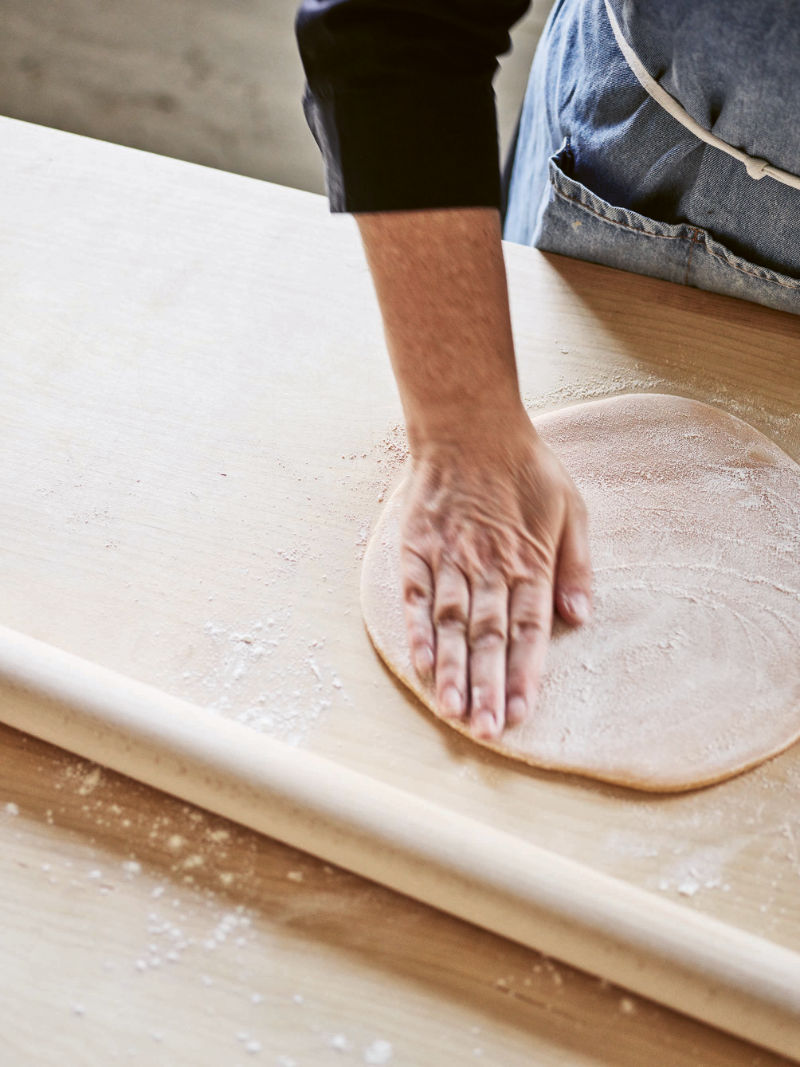
Step 4: Leave the dough to rest
Place the dough in a lidded bowl and cover it to stop it from drying out. Cling film is good too. You can also use a tea towel, but it’s important it hasn’t been washed with perfumed detergent as this will add an odour to your pasta. Leave the dough at room temperature for 30 minutes. This relaxes the gluten and makes it easier to roll out. You can also leave it in the fridge overnight.
The colour will darken, but it will taste the same. It’s important to bring the pasta back to room temperature before you try rolling it.
Step 5: Roll out the dough
Remember to keep your pasta floured throughout the process. Roll your pasta out into a wide circle, using a wooden rolling pin, until it is thin enough to see through. Or follow this video.
If you don’t have eggs… how to make durum wheat pasta dough
“This type of dough is used for all the pasta shapes you find in southern Italy, such as cavatelli and maccheroni and orecchiette,” says Bennison.
Step 1: Weigh out your ingredients
Allow 45–50g tepid water for every 100g semola rimacinata (semolina flour). Incidentally, the volume of the water is the same as the weight: 45–50ml, but scales are more accurate than measuring jugs. Add 4g salt to a litre of warm water. Salt is not there for flavour; it helps to make the gluten strands slide along one another better.
Step 2: Mix them together
Either use a bowl or heap the flour onto your board. Using your fingers, make a well and pour in the amount of water you need. Mix the flour into the water, making sure you mop up all the excess flour.
Step 3: Knead the dough
Knead the dough, as described above, for five minutes. You want a dough that is silky and not sticky to the touch. It won’t have the soft pillowy feel of egg-based pasta dough, but it will feel nice and plastic – and you can use it immediately, there’s no need to leave it to rest. If you knead the dough for longer, it will develop some elasticity and then you will have to let it rest for 20 minutes or so.
Step 4: Shape the dough
Roll the dough if necessary (lots of southern Italian pasta shapes don’t require the dough to be rolled out). Keep the dough covered while you are making the pasta shapes to stop it drying out.
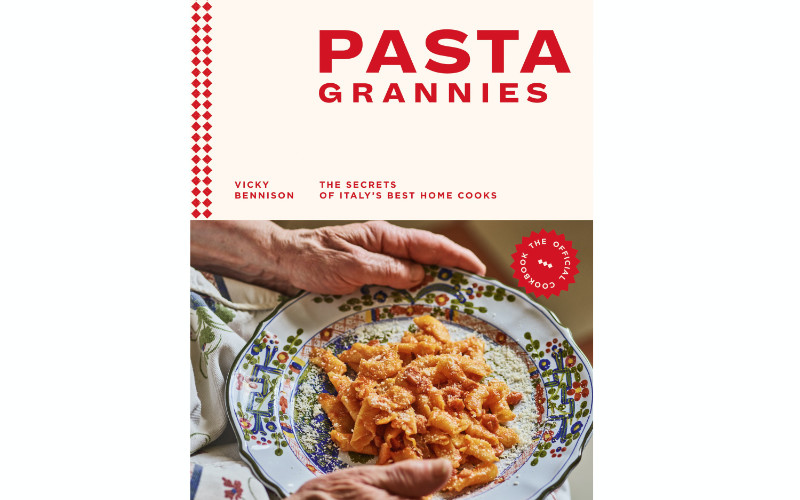
Extracted from Pasta Grannies: The Secrets of Italy’s Best Home Cooks by Vicky Bennison is published by Hardie Grant. Photography Emma Lee.
Wise Living Magazine may receive a small commission to help support the running of this site from purchases made from links on this page. Affiliate links do not influence our editorial or articles published by Wise Living.























































